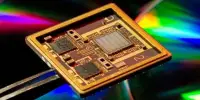A new artificial intelligence technology for heart imaging has the potential to improve patient care by allowing doctors to examine patients’ hearts for scar tissue without the need for contrast injections required for traditional cardiovascular magnetic resonance imaging (CMR). The team reported great success in using its AI approach, known as Virtual Native Enhancement, in an article published in the scientific journal Circulation (VNE).
According to the researchers, the new VNE technology allows doctors to image the heart more frequently and quickly. It may also aid doctors in detecting subtle changes in the heart earlier, though more research is needed to confirm this.
In a new article published in the scientific journal Circulation, a team of researchers who developed the technology, including doctors from UVA Health, reports the approach’s success. The researchers compared their artificial intelligence (AI) approach, known as Virtual Native Enhancement (VNE), to contrast-enhanced CMR scans, which are now used to monitor hypertrophic cardiomyopathy, the most common genetic heart condition. The researchers discovered that VNE produced higher-quality images and captured more evidence of scarring in the heart, all without the need for the standard contrast agent required for CMR.
A new artificial intelligence technology for heart imaging can improve care for patients, allowing doctors to examine their hearts for scar tissue while eliminating the need for contrast injections. An international research team has developed an artificial intelligence technology to improve heart imaging.
“This is a potentially significant advance, especially if it can be extended to other patient groups,” said researcher Christopher Kramer, MD, chief of the Division of Cardiovascular Medicine at UVA Health, Virginia’s only designated Hypertrophic Cardiomyopathy Association Center of Excellence. “Without contrast, being able to identify scar in the heart, an important contributor to progression to heart failure and sudden cardiac death, would be extremely significant. CMR scans would be performed without contrast, saving money and reducing the risk, albeit minor, posed by the contrast agent.”
VNE was created to be an alternative to traditional cardiovascular magnetic resonance imaging, which requires contrast injections. Patients who are allergic to the contrast agent used in CMR, as well as those with severely failing kidneys, would benefit from the technology.

Imaging Hypertrophic Cardiomyopathy
The most common inheritable heart disease and the leading cause of sudden cardiac death in young athletes is hypertrophic cardiomyopathy. It causes the heart muscle to thicken and stiffen, impairing its ability to pump blood and necessitating close medical monitoring.
According to the researchers, the new VNE technology will allow doctors to image the heart more frequently and quickly. It may also aid doctors in detecting subtle changes in the heart earlier, though more research is needed to confirm this.
The technology would also benefit patients who are allergic to the contrast agent used in CMR, as well as patients with severely failing kidneys, who avoid using the agent. The new method employs artificial intelligence to improve the “T1-maps” of heart tissue generated by magnetic resonance imaging (MRI). These maps are combined with enhanced MRI “cines,” which are like moving tissue movies – in this case, the beating heart. The artificial VNE image is created by superimposing the two types of images.
Based on these inputs, the technology can produce images that are nearly identical to the traditional contrast-enhanced CMR heart scans that doctors are used to seeing – only better, according to the researchers. “Avoiding contrast and improving image quality in CMR would only benefit both patients and physicians in the long run,” Kramer said.
“This is a potentially significant advance, especially if it can be expanded to other patient groups,” said Dr. Christopher Kramer, chief of the division of cardiovascular medicine at UVA Health. “Being able to identify scar [tissue] in the heart, which is an important contributor to progression to heart failure and sudden cardiac death, would be highly significant,” he said. “CMR scans would be performed without contrast, saving money and any, albeit minor, the risk from the contrast agent.”
While the new study focused on the potential of VNE in patients with hypertrophic cardiomyopathy, the technology’s developers envision it being used for a variety of other heart conditions as well. “While currently validated in the HCM population,” they write, “there is a clear pathway to extend the technology to a broader range of myocardial pathologies.” “In the near future, VNE has enormous potential to significantly improve clinical practice, reduce scan time and costs, and expand the reach of CMR.”
















